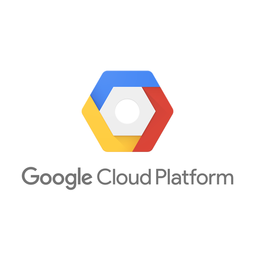Customer Company Size
Large Corporate
Region
- America
Country
- United States
Product
- Google Analytics
Tech Stack
- Google Display Network
- Custom Dimensions in Google Analytics
Implementation Scale
- Enterprise-wide Deployment
Impact Metrics
- Revenue Growth
- Customer Satisfaction
Technology Category
- Analytics & Modeling - Real Time Analytics
Applicable Industries
- Healthcare & Hospitals
Applicable Functions
- Sales & Marketing
Services
- Data Science Services
About The Customer
The American Cancer Society is a global organization that has been working for over 100 years to find a cure for cancer and to help patients fight back, get well, and stay well. The Society uses a number of websites and mobile apps to provide information on cancer detection and treatment, offer volunteer opportunities, and accept donations. The Society's digital platforms are visited by users with different needs and goals, including people seeking information about cancer, people wanting to participate in fundraising events, and people wanting to donate to the fight against cancer.
The Challenge
The American Cancer Society, a century-old organization dedicated to fighting cancer, was facing a challenge in understanding how users interacted with their various websites and mobile apps. They were aware that their digital platforms were being visited by users with different needs and goals, but it was difficult for their digital marketing team to isolate these customer segments and assist them in achieving their goals. Additionally, the Society wanted to address concerns with the Google Analytics implementation on its sites, monitor how its users changed behavior over time, and remarket to all segments once they were identified. To tackle these challenges, the Society turned to Search Discovery, a digital analytics and marketing company.
The Solution
The Society and Search Discovery began by using Google Analytics to capture data that would help them identify user segments. They identified three main personas: Info seekers, Event participants, and Donors. They then used Custom Dimensions in Google Analytics to capture the vital signs of conversion success for each segment. Search Discovery began mapping events that showed when each user was successful or unsuccessful at meeting a goal. Custom metrics were used to record a score for each event. This scoring method helped the Society marketing team monitor the overall health of the site for each user segment and follow trends over time. It also let the team dig deeper into the data when abnormalities arose. More importantly, the Society could now use the Google Display Network to remarket to its users based on any combination of those segments and scores.
Operational Impact
Quantitative Benefit

Case Study missing?
Start adding your own!
Register with your work email and create a new case study profile for your business.
Related Case Studies.

Case Study
Hospital Inventory Management
The hospital supply chain team is responsible for ensuring that the right medical supplies are readily available to clinicians when and where needed, and to do so in the most efficient manner possible. However, many of the systems and processes in use at the cancer center for supply chain management were not best suited to support these goals. Barcoding technology, a commonly used method for inventory management of medical supplies, is labor intensive, time consuming, does not provide real-time visibility into inventory levels and can be prone to error. Consequently, the lack of accurate and real-time visibility into inventory levels across multiple supply rooms in multiple hospital facilities creates additional inefficiency in the system causing over-ordering, hoarding, and wasted supplies. Other sources of waste and cost were also identified as candidates for improvement. Existing systems and processes did not provide adequate security for high-cost inventory within the hospital, which was another driver of cost. A lack of visibility into expiration dates for supplies resulted in supplies being wasted due to past expiry dates. Storage of supplies was also a key consideration given the location of the cancer center’s facilities in a dense urban setting, where space is always at a premium. In order to address the challenges outlined above, the hospital sought a solution that would provide real-time inventory information with high levels of accuracy, reduce the level of manual effort required and enable data driven decision making to ensure that the right supplies were readily available to clinicians in the right location at the right time.

Case Study
Gas Pipeline Monitoring System for Hospitals
This system integrator focuses on providing centralized gas pipeline monitoring systems for hospitals. The service they provide makes it possible for hospitals to reduce both maintenance and labor costs. Since hospitals may not have an existing network suitable for this type of system, GPRS communication provides an easy and ready-to-use solution for remote, distributed monitoring systems System Requirements - GPRS communication - Seamless connection with SCADA software - Simple, front-end control capability - Expandable I/O channels - Combine AI, DI, and DO channels

Case Study
Driving Digital Transformations for Vitro Diagnostic Medical Devices
Diagnostic devices play a vital role in helping to improve healthcare delivery. In fact, an estimated 60 percent of the world’s medical decisions are made with support from in vitrodiagnostics (IVD) solutions, such as those provided by Roche Diagnostics, an industry leader. As the demand for medical diagnostic services grows rapidly in hospitals and clinics across China, so does the market for IVD solutions. In addition, the typically high cost of these diagnostic devices means that comprehensive post-sales services are needed. Wanteed to improve three portions of thr IVD:1. Remotely monitor and manage IVD devices as fixed assets.2. Optimizing device availability with predictive maintenance.3. Recommending the best IVD solution for a customer’s needs.

Case Study
HaemoCloud Global Blood Management System
1) Deliver a connected digital product system to protect and increase the differentiated value of Haemonetics blood and plasma solutions. 2) Improve patient outcomes by increasing the efficiency of blood supply flows. 3) Navigate and satisfy a complex web of global regulatory compliance requirements. 4) Reduce costly and labor-intensive maintenance procedures.

Case Study
Cloud-based healthcare solution for Royal Philips
Royal Philips wanted to launch its cloud-based healthcare solution HealthSuite Digital Platform in China to deliver services to help cope with challenges related to urbanization and population growth. Philips wanted to achieve this goal by combining mobile, cloud computing and big data technologies. To bring this platform and product to market, Philips required cloud computing and local technical service capabilities in China, in addition to a flexible IT infrastructure that could handle user requests.








